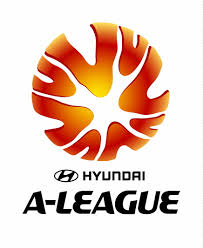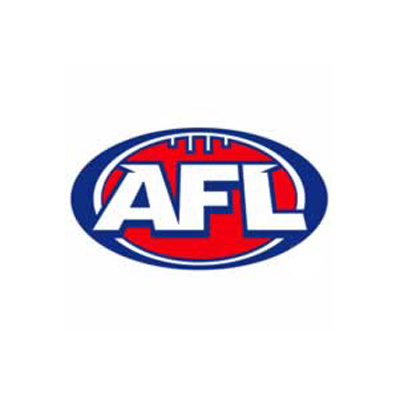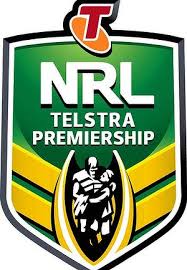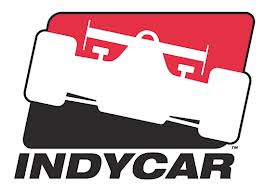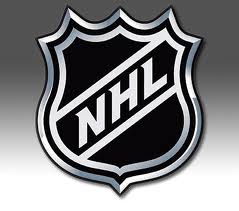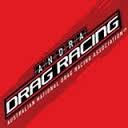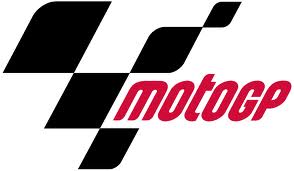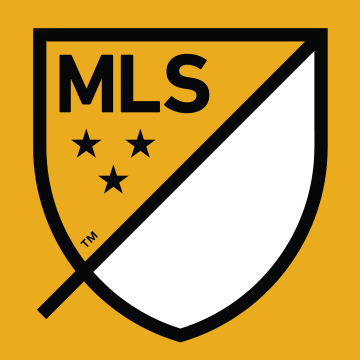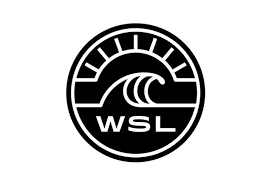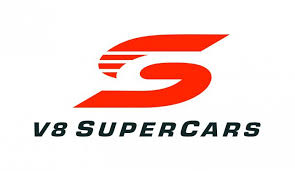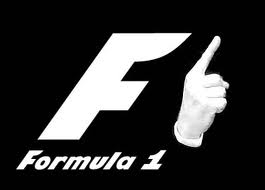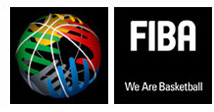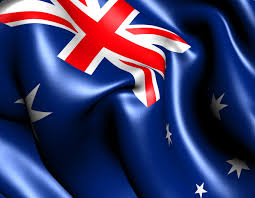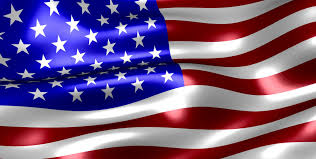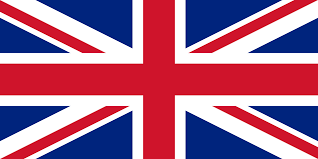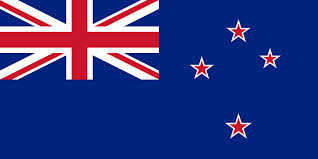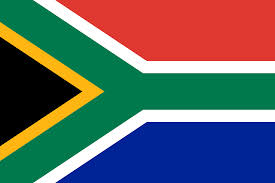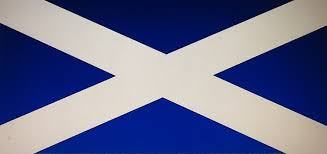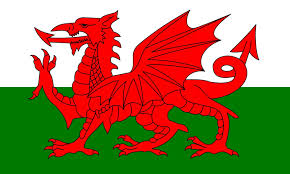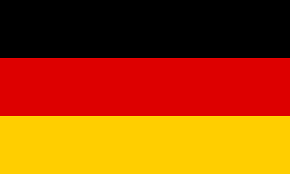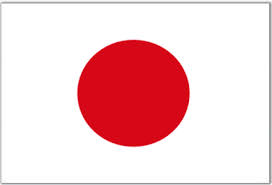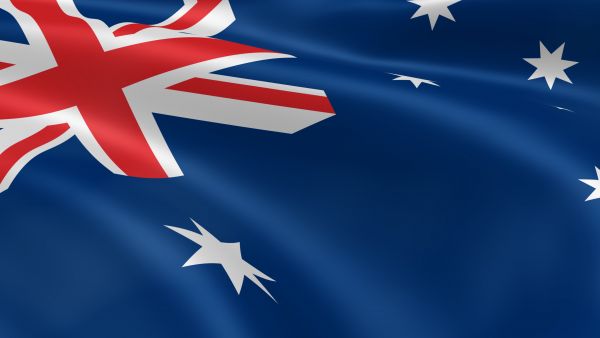EARLY DAYS
The Horsham Motor Sports Club began humbly in 1967, with the nucleus of original members coming from the Wimmera Light Car Club. Between 1959 and 1969, the Wimmera Light Car Club held race meetings on an oil-bonded dirt track on land near the current Dooen Go-Kart track. Popular events were Motorkhana and sprint races in road going vehicles.
Horsham Motor Sports Club offered something new with a focus of racing purpose built speedway cars.
The inaugural President of the HMSC was Robert F. Tucker. He set a precedent for the club in its early years, as most members were owner-drivers, and travelled to represent the HMSC.
 Other members such as Col McDonald and Bill Norris were the first of a long list of successful drivers to travel from the Horsham Club. A strong culture of interclub racing grew in the district. Some of the tracks the early members travelled to and competed at were Warrnambool, Portland, Hamilton, Mortlake, Stawell, Simpson and Nhill. As the years went on they began to travel even further a field.
Other members such as Col McDonald and Bill Norris were the first of a long list of successful drivers to travel from the Horsham Club. A strong culture of interclub racing grew in the district. Some of the tracks the early members travelled to and competed at were Warrnambool, Portland, Hamilton, Mortlake, Stawell, Simpson and Nhill. As the years went on they began to travel even further a field.
 The HMSC has had a proud history of competition on the track. Drivers in the Standard and more recently Limited Sportsman classes such as Nev Eltze, Eric Davidson, Percy Puls and many others attained tremendous success for the Horsham Club. There have been many successful members in Saloon classes also, with Nev Eltze topping the list over his long speedway career, together with Steve Ellis, Peter Watts, Gavin and David Puls in more recent times.
The HMSC has had a proud history of competition on the track. Drivers in the Standard and more recently Limited Sportsman classes such as Nev Eltze, Eric Davidson, Percy Puls and many others attained tremendous success for the Horsham Club. There have been many successful members in Saloon classes also, with Nev Eltze topping the list over his long speedway career, together with Steve Ellis, Peter Watts, Gavin and David Puls in more recent times.

Female drivers made their mark in speedway through the Horsham Club. Marion Kowarzik, Kathy Wilson, Carole Baker and more recently Dot McMaster, Katrina Berry, Leanne Wilde, Nicole Simpson and Sharon Watts have competed strongly.
A HOME OF OUR OWN
It had always been a dream that one day HMSC would have its own race track. Several attempts were made throughout the 1970’s to make this happen, but unfortunately at the time there was not the local support or enough money available to make it happen.
In 1984 Horsham Motor Sports Club amalgamated with the Nhill Motorsports Club to form the Wimmera Motor Sports Club. The new club proudly had membership of over 80 members and work began on repairing and upgrading the Intercapital speedway located 6 Kilometers north-east of Nhill.
 Many successful race meetings were held at the Intercapital Speedway during the 1980’s, but in 1991 members decided that the interclub relationship had run its course, and the club split.
Many successful race meetings were held at the Intercapital Speedway during the 1980’s, but in 1991 members decided that the interclub relationship had run its course, and the club split.
Horsham Motor Sports Club reformed later that year with an enrolment of 30 members.
A home speedway was again on the agenda of the reformed club and due to the foresight and many hours of planning by dedicated and hardworking members, the HMSC now has its own track. Chris Wilde, Rod Berry, Robert Tucker and Dick Gill were all instrumental in this process. In 1989 the Club went into fundraising gear for two years with raffles, bottle drives and cake stalls providing the initial $10,000 for the new speedway.
A public meeting was called in September 1993, with the Wimmera Shire and Horsham City Council, to locate a suitable site for a speedway. A speedway at Dooen was again considered and also land at Burnt Creek, south-east of Horsham. The site that was eventually approved was on farming land belonging to Laurie Smith of Kalkee. The Blue Ribbon Raceway, as the new speedway was named, remains there to this day.

The first earthworks began on May 27th, 1995. Club members through working bees supervised by the then President, Robert D Tucker of Horsham, built the track. The first practice meeting was held in February 1996, followed by the first race meeting in March 1996.
Mr Alan Jones, President of the Victorian Speedway Council, officially opened the Blue Ribbon Raceway on November 23, 1996. Facilities for these opening meetings were fairly basic, with hired portable toilets, a tent for a canteen, and a pit box that was still in need of improvements.
 Thankfully, due to much more hard work by the members, now counting more than 100, and a very supportive community, these facilities have been improved. A toilet block became a permanent fixture in September 1996, thanks to ten members of the club and Kalkee community loaning $10,000 to the Club for the project.
Thankfully, due to much more hard work by the members, now counting more than 100, and a very supportive community, these facilities have been improved. A toilet block became a permanent fixture in September 1996, thanks to ten members of the club and Kalkee community loaning $10,000 to the Club for the project.
 At the same time, the main canteen building was purchased from the field days site for $5000 by two club members. All of this was on loan to HMSC until the club was in the financial position to repay the money. Work continued in the pit box and Stewards area for the 96-97 season, as it did elsewhere around the facility.
At the same time, the main canteen building was purchased from the field days site for $5000 by two club members. All of this was on loan to HMSC until the club was in the financial position to repay the money. Work continued in the pit box and Stewards area for the 96-97 season, as it did elsewhere around the facility.
The 96-97 season also saw the extension of the windbreak fence on the southern side of the track and the beginnings of investigations into lighting for the track, as it cost $2000 per meeting to hire the light tower from Adelaide. The club also investigated power for the complex as generators were borrowed from farmers in the area and Jeparit for each race meeting. Canteen equipment was kindly loaned by the Kalkee Football Club for each meeting.

In the early part of the 96-97 season it became obvious that Blue Ribbon Raceway needed toilet facilities in the pit area, as well as food available for the competitors, officials and spectators on the pit side of the track.
 Members went searching again and found two small buildings up for tender at the Horsham Technical School site. HMSC was successful with its tender and once again members assisted by donating the money required to purchase and install these buildings at Blue Ribbon Raceway.
Members went searching again and found two small buildings up for tender at the Horsham Technical School site. HMSC was successful with its tender and once again members assisted by donating the money required to purchase and install these buildings at Blue Ribbon Raceway.
BLUE RIBBON RACEWAY GROWS
 The lighting project was well beyond the fundraising capabilities of the Club with a total cost of $86,550. The club successfully applied to the Department of Youth, Sport and Recreation and received a grant of $15,000 towards the project. The lighting firm Musco supplying the fittings, which allowed the Club to defer the final payment until halfway through the 96-97 season.
The lighting project was well beyond the fundraising capabilities of the Club with a total cost of $86,550. The club successfully applied to the Department of Youth, Sport and Recreation and received a grant of $15,000 towards the project. The lighting firm Musco supplying the fittings, which allowed the Club to defer the final payment until halfway through the 96-97 season.
A bank loan of $25,000 was arranged, and the club successfully raised the rest with the careful planning and hard work to which they were now accustomed. The Horsham Sports and Community Club kindly assisted with a $2000 grant towards the shortfall.
 The lighting project also needed to be powered, and once again members went on the hunt, with Robin Thomas, Wes Bell and David Moore travelling to Gippsland to source a generator. They found a 250kva unit, which would power the whole complex and came back to discuss it with the Club. As usual, money was the only hiccup, and again the members dug into their pockets with 11 members purchasing the generator.
The lighting project also needed to be powered, and once again members went on the hunt, with Robin Thomas, Wes Bell and David Moore travelling to Gippsland to source a generator. They found a 250kva unit, which would power the whole complex and came back to discuss it with the Club. As usual, money was the only hiccup, and again the members dug into their pockets with 11 members purchasing the generator.
 1997 came with a major challenge for HMSC when one of it’s initial sponsors and provider of essential plant equipment, AH Plant Hire closed its Horsham office. Graders and water trucks, which Blue Ribbon Raceway would not be able operate without, were originally sourced from AH Plant. Unexpectedly, five local community and club members located and purchased a grader for the club to use.
1997 came with a major challenge for HMSC when one of it’s initial sponsors and provider of essential plant equipment, AH Plant Hire closed its Horsham office. Graders and water trucks, which Blue Ribbon Raceway would not be able operate without, were originally sourced from AH Plant. Unexpectedly, five local community and club members located and purchased a grader for the club to use.
 The incredibly time consuming issue of borrowing and returning rollers was also solved with the generosity of club members. A roller was purchased from K & J Baker Cartage of Murtoa, partly sponsored and paid for by two members. A second roller was leased from the Hindmarsh Shire, with the hope that it may be available for sale at a later date.
The incredibly time consuming issue of borrowing and returning rollers was also solved with the generosity of club members. A roller was purchased from K & J Baker Cartage of Murtoa, partly sponsored and paid for by two members. A second roller was leased from the Hindmarsh Shire, with the hope that it may be available for sale at a later date.
 The club also needed water trucks. John Aisbett loaned a Bedford truck to the club for as long as it wished to use it. Mobil Horsham donated the tank for it and a member also purchased the water pump, fittings, bar, hoses and taps for the truck. Members repaired and painted the truck, and it has been sign-written. It soon became evident that one 4000 litre capacity water truck would not be able to deliver enough water to prepare the track each race meeting.
The club also needed water trucks. John Aisbett loaned a Bedford truck to the club for as long as it wished to use it. Mobil Horsham donated the tank for it and a member also purchased the water pump, fittings, bar, hoses and taps for the truck. Members repaired and painted the truck, and it has been sign-written. It soon became evident that one 4000 litre capacity water truck would not be able to deliver enough water to prepare the track each race meeting.
A second water truck was built with using an Austin truck donated by Rick Smith. The water tank and fittings on this truck were loaned by G & J Brain. In more recent times, a 32,000 litre semi tanker has been used regularly to prepare the track before meetings, but to this day, John Aisbett’s Bedford is still used during race meeting to maintain track moisture.
 Horsham Motor Sports Club successfully applied to conduct the Victorian Speedway Council Victorian Street Stock Title at Horsham in March 1998, and needed to organise a scrutineering shed for events such as these. Once again members met this need by finding some unused sheds on farms in the area. Owners were approached and the buildings were either donated or sold to the club for figures like $100, providing the sites were cleaned up and, in some cases, some other clean up work was done for the land owner. Thus the arrival of the scrutineering shed in time for the Street Stock State Title.
Horsham Motor Sports Club successfully applied to conduct the Victorian Speedway Council Victorian Street Stock Title at Horsham in March 1998, and needed to organise a scrutineering shed for events such as these. Once again members met this need by finding some unused sheds on farms in the area. Owners were approached and the buildings were either donated or sold to the club for figures like $100, providing the sites were cleaned up and, in some cases, some other clean up work was done for the land owner. Thus the arrival of the scrutineering shed in time for the Street Stock State Title.  A tower to include lighting and speakers for driver calls and announcements was also installed. The 97-98 season also saw the GP Midget Australian Title contested at the Blue Ribbon Raceway, and the Hoosier series round for Sprintcars. In September 1997 the inaugural Vintage Tractor Display also took place at the raceway.
A tower to include lighting and speakers for driver calls and announcements was also installed. The 97-98 season also saw the GP Midget Australian Title contested at the Blue Ribbon Raceway, and the Hoosier series round for Sprintcars. In September 1997 the inaugural Vintage Tractor Display also took place at the raceway.
Flooding in the centre of the track and in the pits after heavy rain forced HMSC to cancel a meeting, and very nearly as second one, during the 97-98 season.
Once again members decided to act, and after raising the funds for the $2400 of pipe, the drainage was installed by members. A digger was loaned at no charge and the sand donated. This job required 247 man-hours from volunteers at working bees.
 At this time the club felt it would like to see a return to the fun and sociable side of speedway, as it was in years gone by. The Club decided to provide facilities to enable travellers to camp overnight at the track. This dream was realised in September 1998 with the installation of a toilet and shower block in the pit area. A member loaned the money for the purchase of the block pre season, and this was repaid during the season when funds became available.
At this time the club felt it would like to see a return to the fun and sociable side of speedway, as it was in years gone by. The Club decided to provide facilities to enable travellers to camp overnight at the track. This dream was realised in September 1998 with the installation of a toilet and shower block in the pit area. A member loaned the money for the purchase of the block pre season, and this was repaid during the season when funds became available.
 Provision of a canteen on the pit side of the track proved to be very profitable, but the very small room being used was not able to cope with the demand. After only one season, another building was sourced to be put in its place, and this was in place in time for the opening of the 98-99 season. The smaller building was moved to the north eastern corner where it is used as a drinks booth and for some food sales.
Provision of a canteen on the pit side of the track proved to be very profitable, but the very small room being used was not able to cope with the demand. After only one season, another building was sourced to be put in its place, and this was in place in time for the opening of the 98-99 season. The smaller building was moved to the north eastern corner where it is used as a drinks booth and for some food sales.
In November 1998 the HMSC was informed that a round of the World Series Sprintcars would be conducted at the Blue Ribbon Raceway in December 1998. This was very exciting for all concerned with club as it is considered the pinnacle of speedway racing. However, with this came the need for more improvements. The pits would not be large enough for the large transporters, which carried the sprintcars, so it was decided to immediately extend the pit area in time for December 28th, and this was achieved with more fundraising activities.
 With the larger and faster cars then racing at the track, it was felt that a special foam fire unit should be provided in case of fires if accidents occurred. The usual procedure followed; a ute was donated and members worked hard to repair it, replace panels, paint, sign write it. Rosevear Engineering generously donated their time to built a purpose built frame and platform on the back of the ute. A local panel beater Mr Krahe also very generously donated many hours to this project. Parts of the foam unit and pump were once again purchased by a club member and loaned to the Club for as long as they wished to use them.
With the larger and faster cars then racing at the track, it was felt that a special foam fire unit should be provided in case of fires if accidents occurred. The usual procedure followed; a ute was donated and members worked hard to repair it, replace panels, paint, sign write it. Rosevear Engineering generously donated their time to built a purpose built frame and platform on the back of the ute. A local panel beater Mr Krahe also very generously donated many hours to this project. Parts of the foam unit and pump were once again purchased by a club member and loaned to the Club for as long as they wished to use them.
The final result of all this work was a vehicle any race track would be proud of and have confidence in.
The raceway was beginning to have problems with the septic tanks of the toilet blocks not handling larger crowds. The cost to have the septic pumping truck on hand for was approximately $500 a meeting. It was decided that this was too large an expense for so many occasions, so once again the members worked for many hours and raised $2000 to buy the necessary scoria and pipe. A digger was loaned and the sand donated and again all the hours of volunteer labour, resulting in realm drains that were installed at both the public and pit area toilets in December 1998.

With all of this complete the World Series Sprintcar event attracted approximately 5500 people to the Blue Ribbon Raceway. Club members and officials were delighted with this attendance.
During the early months of 1999, a Barn that had been donated to the Club was moved in to the pit area to be used for driver’s talks, meetings and social functions. Doors, windows, a roller door, furniture, and labour were donated once again, with a wonderful result.
Dust is a continual problem on the Wimmera plains so the club decided, in the off-season in 1999, to grass the spectator areas. However, insufficient rains caused this to fail. This project was finally completed in March 2000 and now provides much improved facilities for spectators.
 Construction of a new Pit Box tower commenced during 2007 to better serve the needs of stewards, lap-scorers, commentators and visiting officials. The original pit box was one of the first buildings built at the raceway and was beginning to show its age. It could no-longer safely accommodate the lap-scorers, officials and commentators that used it each race meeting.
Construction of a new Pit Box tower commenced during 2007 to better serve the needs of stewards, lap-scorers, commentators and visiting officials. The original pit box was one of the first buildings built at the raceway and was beginning to show its age. It could no-longer safely accommodate the lap-scorers, officials and commentators that used it each race meeting.
 The new pit box was a unique design, built from two converted shipping containers mounted one above the other. Club member and qualified builder, Nigel Quick, supervised and co-ordinated construction of the pit box. The smaller 20 foot container was converted during the first half of 2007 with the 40 foot container conversion commencing later in the year with holes cut and frames made for windows, doors and air conditioners.
The new pit box was a unique design, built from two converted shipping containers mounted one above the other. Club member and qualified builder, Nigel Quick, supervised and co-ordinated construction of the pit box. The smaller 20 foot container was converted during the first half of 2007 with the 40 foot container conversion commencing later in the year with holes cut and frames made for windows, doors and air conditioners.
 At the 2008 Annual Presentation Dinner, the President Michael Fitzgerald proudly showed a video of the original pit box being knocked down and taken away on the front of a front-end loader. Demolishing the pit box was a bold statement. It meant that the members would have to pull together to ensure that the replacement pit box was ready for the next racing season.
At the 2008 Annual Presentation Dinner, the President Michael Fitzgerald proudly showed a video of the original pit box being knocked down and taken away on the front of a front-end loader. Demolishing the pit box was a bold statement. It meant that the members would have to pull together to ensure that the replacement pit box was ready for the next racing season.
 A working bee was called for the following weekend after the dinner and working bees were held every Sunday after that until the racing season began in October. In just three months the large container was fitted out with plaster, doors, windows and cabling. The two containers were placed in location by a crane up on top of the embankment. Work continued right up until the first race meeting with the installation of a covered walkway and roof.
A working bee was called for the following weekend after the dinner and working bees were held every Sunday after that until the racing season began in October. In just three months the large container was fitted out with plaster, doors, windows and cabling. The two containers were placed in location by a crane up on top of the embankment. Work continued right up until the first race meeting with the installation of a covered walkway and roof.
Work continues on the Blue Ribbon Raceway complex to improve facilities for drivers, spectators, officials and the many individuals it takes to successfully run a racetrack. Members and volunteers endeavour to operate a speedway other clubs can be envious of. Anyone wishing to inspect the facilities at the Blue Ribbon Raceway complex is more than welcome. Please contact the club to arrange a mutually convenient time.
 - All Sports
- All Sports





